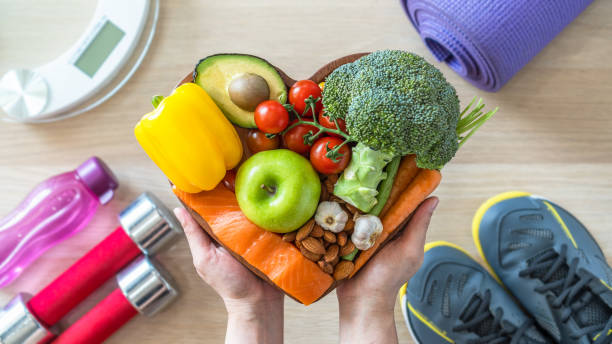Get ready to 🔥 torch fat with these ⏱️ 20-minute HIIT workouts! 💪🏋️♀️ Discover the secret to maximum fat burn. 🔥🔥🔥 Don't miss out! 📖💥
Updated at: 2025-05-14 13:40:46 (6 months ago by Melkisedeck Leon Shine)
Unlocking Metabolic Potential: Optimizing Fitness Through 20-Minute HIIT Workouts
High-Intensity Interval Training (HIIT), a cornerstone of contemporary fitness methodologies, offers a remarkably efficient strategy for achieving rapid fat loss and enhancing overall physical well-being. This approach leverages the principle of metabolic adaptation, whereby short bursts of intense exercise interspersed with brief recovery periods trigger a significant increase in cardiovascular demand, maximizing caloric expenditure and accelerating fat metabolism. This results in substantial fitness gains within a minimal timeframe, making HIIT particularly suitable for individuals with time constraints and ambitious fitness objectives. The efficacy of HIIT stems from its ability to elicit a robust metabolic response, leading to demonstrable improvements in body composition and overall health.
The versatility of HIIT is a key factor in its widespread appeal. Requiring minimal equipment – a timer and a suitable space suffice – HIIT workouts seamlessly integrate into diverse lifestyles and environments, from home workouts to outdoor sessions. This adaptability, grounded in the principles of accessibility and convenience, ensures that fitness remains attainable regardless of logistical limitations. This aligns with the concept of ecological validity in exercise interventions, ensuring the program's effectiveness transcends the controlled environment of a gym.
A structured 20-minute HIIT session typically incorporates a sequence of dynamic compound exercises such as burpees, mountain climbers, squats, and lunges. These exercises are chosen for their effectiveness in simultaneously engaging multiple muscle groups, thereby optimizing calorie burn and maximizing workout efficiency. This holistic approach is predicated on the principles of functional training, enhancing both strength and cardiovascular fitness simultaneously within a limited time constraint. The session's design should adhere to the principles of exercise prescription, considering individual fitness levels and training goals.
Individualizing HIIT intensity is crucial for safety and effectiveness. The principle of progressive overload, gradually increasing training stimulus over time, should guide exercise prescription. Beginners should initiate with shorter work intervals and longer rest periods, progressively adjusting the work-to-rest ratio as fitness improves. This approach adheres to the principle of periodization, systematically manipulating training variables to optimize adaptations. Constant monitoring of exertion levels, guided by Rate of Perceived Exertion (RPE) scales, ensures workouts remain appropriately challenging yet safe, preventing overtraining and injury.
The post-exercise metabolic elevation, or excess post-exercise oxygen consumption (EPOC), is a significant benefit of HIIT. This "afterburn effect" contributes to extended calorie expenditure for several hours post-workout, further enhancing fat loss. This metabolic enhancement plays a key role in achieving long-term changes in body composition, illustrating the efficacy of HIIT beyond the immediate workout duration. The magnitude of EPOC is influenced by factors such as the intensity and duration of the workout.
Research consistently demonstrates HIIT's superior efficacy in reducing visceral fat (abdominal fat) compared to other exercise modalities. Studies have indicated that HIIT's unique metabolic demands contribute significantly to this targeted fat reduction, leading to improvements in body composition and a reduction in cardiovascular risk factors. The underlying mechanism involves the interplay between hormonal responses and enhanced energy expenditure.
The cardiovascular benefits of HIIT extend beyond fat loss. The intense nature of the workouts strengthens the cardiovascular system, improving aerobic capacity, and contributing to enhanced overall health and well-being. Improvements in VO2 max (maximal oxygen uptake), a key indicator of cardiovascular fitness, are frequently observed in individuals undertaking regular HIIT training. This translates to improved daily functioning and increased resilience to physical stress.
The time efficiency of HIIT makes it an optimal choice for individuals with busy schedules. A 20-minute HIIT session provides a comprehensive workout, maximizing training effectiveness within a minimal time commitment. This aligns with the concept of time-efficient training, prioritizing maximal results within limited temporal constraints.
For optimal results, a training frequency of 3-4 HIIT sessions per week, separated by at least one rest day, is recommended. This approach facilitates muscle recovery and prevents overtraining, crucial factors in ensuring sustainable progress and avoiding plateaus. The principle of rest and recovery is fundamental to optimizing adaptations and preventing injuries.
Beginners should commence with a work-to-rest ratio of approximately 20 seconds of high-intensity work followed by 40 seconds of rest. This ratio should gradually shift towards a higher work-to-rest ratio as fitness progresses, reflecting the principle of progressive overload. Consistent monitoring of the RPE scale ensures safe and effective progression.
Maintaining correct exercise form is paramount for maximizing results and minimizing injury risk. Individuals unsure about proper technique should consult a certified fitness professional or reliable online resources. This step safeguards against injuries and maximizes the benefits of the workout, aligning with the principles of safe and effective training practices.
Supplementing HIIT with strength training enhances overall fitness outcomes. Strength training builds lean muscle mass, which boosts metabolism, further augmenting fat loss and improving body composition. This combined approach leverages the synergistic effects of both cardiovascular and resistance training, producing well-rounded fitness gains.
While HIIT presents a significant challenge, particularly initially, consistency and perseverance are key to achieving fitness goals. Tracking progress, celebrating achievements, and fostering a positive mindset contribute to long-term adherence. The process of behavior change and adherence to the program are crucial factors in attaining desired outcomes.
Embarking on a HIIT fitness journey offers a path to transformative physical and metabolic benefits. The principles of metabolic adaptation, progressive overload, and individualized training are central to its success, yielding significant improvements in fitness and well-being within a relatively short timeframe. The program's adaptability and time efficiency make it a viable choice for individuals seeking a powerful yet accessible training modality.
Conclusions and Recommendations: This analysis highlights the significant potential of 20-minute HIIT workouts for enhancing metabolic function, promoting fat loss, and improving cardiovascular fitness. The application of principles from exercise physiology, training science, and behavioral change models underscores the program's efficacy. Recommendations include incorporating progressive overload, monitoring RPE, emphasizing correct form, and supplementing with strength training for optimal results. Future research could focus on the long-term impact of HIIT on various health markers, particularly in specific populations. The accessibility and time-efficiency of HIIT make it a readily applicable intervention for improving population health. Further research might examine the effectiveness of different HIIT protocols tailored to diverse fitness levels and health conditions.
Reader Pool: Considering the presented evidence on HIIT's efficacy, how might the principles of progressive overload and individualized training be most effectively implemented to maximize both safety and effectiveness for individuals with varying fitness levels and health conditions?






